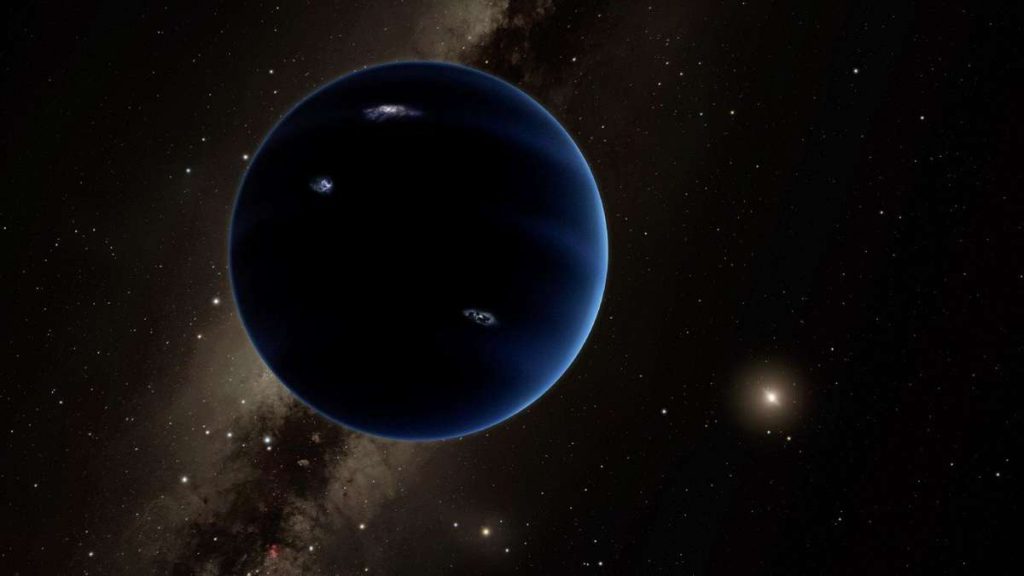-
fromTanya Banner
Close
Is there a ninth planet in the solar system? Two researchers think: Yes. Now, in their search for “Planet 9,” they’ve made a potentially crucial step.
Pasadena – According to official statistics, there are currently eight planets in our solar system. This is partly due to astronomer Michael E. Brown of the California Institute of Technology in Pasadena, who was partly responsible for the fact that Pluto revoked planet status in 2006. But a few years ago, Brown assumed there was still a ninth planet in the solar system. “All the people who are angry with me because Pluto is no longer a planet can be happy because there is still a planet to be discovered there,” Brown said after publishing a paper I put out in 2016. It is the ninth previously unknown planet in the solar system.
Since then, the debate over the possible existence of a ninth planet and the search for “Planet 9” has continued. Brown and his research colleague Konstantin Batygin discovered the motion of dwarf planets outside the orbit of Neptune. It cannot be explained only by the gravitational pull of known celestial bodies in the solar system. The researchers’ theory: A previously unknown object influences the motion of dwarf planets. According to calculations at that time, it is said that the mass of this “Planet 9” is ten times the mass of the Earth, that it is twenty times farther from the Sun than Neptune, and it takes 10,000 to 20,000 years for one orbit around the Sun.
Find ‘Planet 9’: ‘We now know where to look’ astronomers say
Now Brown and Batygin have another research project on “Planet 9” Published on arXiv servers. Brown summarizes the post on his website: “Now we know where to look.” Among other things, many simulations were carried out in which the planet had 9 different parameters. Almost every one of these parameters had “significant effects on the outer solar system” in the simulation, Brown describes the result. This is good, it means that the movements of the celestial bodies in the outer solar system allow to draw conclusions about the unknown planet.
Batygin and Brown also publish a sky map showing what the most likely orbit of the unknown planet looks like and where it is currently most likely located. If Planet 9 weighed about 6.2 Earth masses, the planet would orbit the Sun at a distance of 300 to 450 astronomical units. The AU (astronomical unit) measures about 150 million kilometers – the average distance between the Sun and the Earth. On the other hand, if Planet 9 were only 2.2 Earth masses heavy, it could get very close to the Sun at a distance of 85 AU.
‘Planet 9’ has never been seen – but it must exist, say two researchers
But where exactly do you find the infamous Planet 9? “Unfortunately, the data only tells us the orbital path and not where the planet is in its path,” Brown explains on Twitter. “This is actually a great shame.” However, the planet is likely to be at its farthest from the sun because it is moving there more slowly. “You should look in there,” Brown continues, who self-deprecatingly calls himself a “blottoeller” on Twitter.
satellite bulletin
What happens in astronomy And what topics are currently in space travel currently? Our free space newsletter keeps you updated.
The search for “Planet 9”: it may have already been found
If Planet 9 does exist, how quickly you can find it depends on its brightness and size. “It could be that the brighter variant has already been taken from various sky surveys,” the researchers wrote in their study. “To discover the darker variant, you must specifically search for it with eight to ten meter telescopes.” Citizen-Science-Projekt, where citizen scientists can search for “Planet 9”.
“Pluteller” Brown does not believe in the theory that a celestial body, the gravity of which affects the outer solar system, is a primordial black hole. Brown wrote on Twitter that he thought the theory was “ridiculous.” However, the new study does not refute the black hole theory. “We can only measure mass. It could be a six-terrestrial black hole (but it really isn’t), says Brown. (Tania Banner)

“Total coffee aficionado. Travel buff. Music ninja. Bacon nerd. Beeraholic.”









More Stories
Coral Seeding: Artificial Insemination Makes Coral More Heat Tolerant
Fear, Anger, and Denial: How People Respond to Climate Change – Research
LKH Graz: Using radiation to combat heart arrhythmias